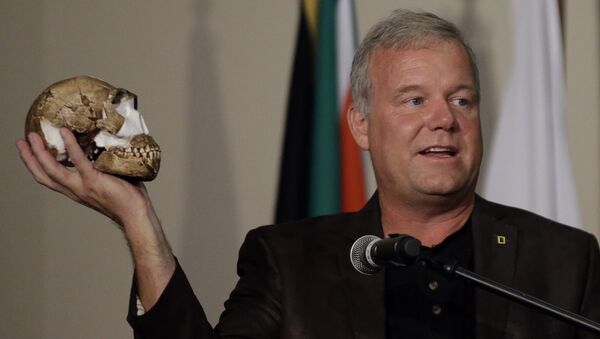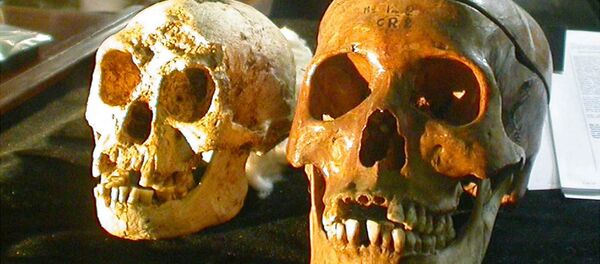The anthropologists with Johannesburg's University of the Witwatersrand published their findings in the journal eLife.
Homo naledi was first discovered in 2013 in South Africa: 15 skeletons were found in the depths of a cave complex that seemed to be a split between our Homo genus and our progenitor genus Australopithecus. Their skulls were half as voluminous as ours, meaning they had small brains, but little else is known for sure about these creatures.
Some anthropologists argue that they buried their dead, given that the bodies were all discovered in one place with no signs of predation. However, the cave complex was extremely treacherous to navigate, so much so that the researchers had to seek out six petite, acrobatic female scientists to reach the bones – not exactly the perfect place to bury your dead.
The age of the bones has been a sticking point in the debate: early dating determined them to be around 200,000-300,000 years old, while later estimates guessed the bones to be between 1.5 and 2.5 million years old.
"This is a humbling discovery for science," Lee Berger, a paleoanthropologist at the University of the Witwatersrand in Johannesburg, told Reuters. "It's reminding us that the fossil record can hide things … we can never assume that what we have tells the whole story."
"No one thought that a small-brained, primitive hominin could extend down through time this long and that period is exactly the moment when we thought modern humans were arising here in Africa."
One major question regarding Homo naledi is what drove them to extinction – and as with nearly every species that has gone extinct since the dawn of man, we are one of the leading suspects. Like the neanderthals, who are believed to have been driven to extinction by humans (how we managed this is still under debate), it is possible that humans outcompeted or outbred Homo naledi into extinction.
"All we know is that Homo naledi is extinct today. Could Homo sapiens have driven them extinct? Yes. Could there have been gene exchange between Homo naledi and early Homo sapiens? It's entirely possible," Berger said.
Berger said his team's next main objective would be to acquire Homo naledi DNA to determine whether there was a gene exchange or not. "If we had Homo naledi DNA, not only would we be able to answer the question of a biological exchange with humans, but we would gain a window back millions of years. We would actually be looking at DNA from the split with humans. And that would be cool."
The bones found thus far were too poorly preserved to contain extractable ancient DNA. It would take another, better-preserved sample to achieve that goal.





